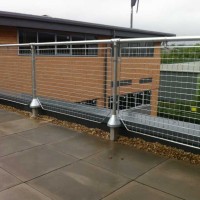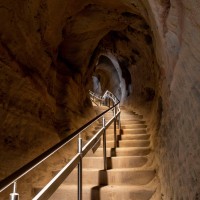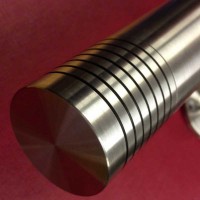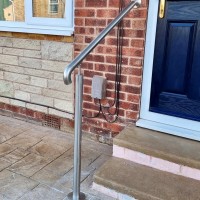Installing a handrail system
Considerations for handrailing systems
Ordering and installing a handrail or railing system can be a rewarding DIY project - You may think this is the work of a specialist contractor but more often than not our simple DIY handrail and balustrade kits are installed by the general public, you just need some basic practical skills. Over the years DioMet have manufactured and delivered thousands of DIY kit railing designs to customers throughout the UK who have successfully installed the product themselves cutting out significant professional costs.
There are a number of basic considerations that should not be overlooked when designing, ordering and installing DIY handrail systems.
1) What is the purpose of the handrail?
Sounds like an obvious question but the use of the handrail may alter it's design, especially from a building control perspective. If the handrail is a wall fixed rail then it simply needs to be installed at the correct height, generally 900mm above the stair nose line. If however the system is intended to guard a fall in height, usually if over 600mm, then the product would be known as abalustrade. Many rules and regulations govern balustrade designs so it is best to contact the experts at DioMet for further advice on your intended use.
2) How is the railing to be mounted?
Often the answer is simple and determined by your construction but generally the system will be base mounted, side (face) fixed or concreted into the ground. Different fixing plates are available to overcome the preferred fixing scenario to make your DIY handrail installation as simple as possible. If you are unsure of the best way to install your system, send us some pictures of your area for further advice.
3) What tools are required to assemble it?
When it comes to handrail installation, a few basic tools should be enough to successfully erect most designs. Ensure you have the correct tools and if not look to hire or borrow items where possible.
- Hammer Drill - For achieving a fixing into brick or concrete walls and bases
- Tape Measure - Essential for setting up the handrail height and post locations.
- Allen Keys - Where mechanical connections are used, for example with glass clamps.
- Hammer - Installing rawl plugs or parabolts.
- Screwdriver and socket sets - Tightening up fittings and fixings
- Spirit Level - Most landing balustrades and decking projects are level - install your railing level also.
- PPE - Boots, eye-glasses, earplugs, gloves. Safety first!
There should be no need to cut, polish or drill any steelwork due to the craftsmanship behind our DIY balustrades - They are designed to fit together with ease, like a large Meccano set.
4) What fixings do i need for my DIY handrail kit?
Each project is different and the fixings used should be appropriate to the attachment surface. Timber joists can be screwed into with coachscrews or bolted through if the other side is accessible. Brick walls are suitable for screws and rawl plugs and resin anchors should be used with larger fixings into concrete.
If the screws or bolts will be seen, always try to match the finish of the bolt to the steelwork used- stainless steel fixings with stainless steel balustrades for example. A mismatch would not look great and would also create a bimetallic reaction over time leading to surface rusting.
Fixings are supplied as standard with our wall fixed stair handrails - These are suitable for both timber and masonry.
5) Balustrade installation basics.
So your DIY balustrade has been delivered, you have your tools and fixings and it's time to erect the system. The first thing to do would be to check your installation instructions and set out drawing - Instructions will be generic so some logic will need to be applied to the individual circumstances. The layout drawing will indicate post centres and locations- plot out your posts to the drawing and do a dry run. Do not fix anything until you can see the items in place and then consider any logical starting points ( a datum) such as corner connections. Assemble loosely at first leaving room for final adjustments in level and orientation.
Further information :
Common balustrade ordering mistakes
Staircase and landing balustrades
Handrail and balustrade component parts
Choosing a glass balustrade supplier
Cafe balustrade with seating area
Please login to Comments




